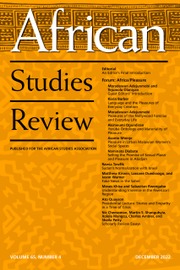The post-Rwandan genocide narrative has long been distorted and purposefully skewed to exonerate the external actors. The narratives that the world has long been presented with framed the 1994 Rwandan genocide as the tragic outcome of solely internal political rivalries and ethnic hatred. In much of the early post-genocide discourse, responsibility was placed exclusively on Rwandan local actors, mainly the political elites, particularly the Hutu Power extremists, while the role of the international community was minimized or conveniently ignored. Its synthesis of rigorous archival research with a powerful moral argument makes this book, A People Betrayed, worth reading for scholars of international relations, human rights, postcolonial studies, and contemporary history.
Linda Melvern’s work stands as an indispensable contribution to both the historiography of genocide and the critique of international law and diplomacy as it dismantles the limited and distorted perspective of the Rwandan genocide, not only giving a detailed history of the prior “tribal” segregation and bigotry but also forcefully arguing that the West was not merely a passive bystander but an active warmonger and an accomplice: “Rwanda’s violent divisions might have been easier to heal and its tragic history somewhat different had it not been for the involvement of outside interests” (29). Central to Melvern’s intervention is her unrelenting pursuit of the truth behind the international community’s failure to prevent, mitigate, or even adequately acknowledge the genocide as it unfolded. Through meticulous research, including diplomatic cables, UN documents, and testimonies, A People Betrayed exposes how Western governments, international institutions, and the United Nations contributed to the conditions that made the genocide possible, and turned away as nearly a million lives were annihilated. Through archival pieces, she exposed how the West made sure that weapons and ammunitions were made available for the massacre. An example is the case of how Mil-Tec
bought and flew weapons to Hutu Power from countries all over the world. As an offshore company it was exempt from a UN arms embargo imposed by the Security Council on 17 May. Under British law, UN arms embargoes are enforced by means of statutory instruments, and on 24 June 1994, when the arms embargo statute was drafted by government lawyers, they failed to include the Crown dependencies in the enabling legislation.
(206)What distinguishes this masterpiece from other books on the same theme is how it balances the narrative of both the local and foreign players. Far from presenting the genocide as an isolated paroxysm of ethnic violence, Melvern situates it within a broader matrix of postcolonial state formation, geopolitical interests, and the structural failures of international institutions. Through her exhaustive investigation, she reveals not merely a failure of will but a systematic betrayal of international legal and moral obligations under the Genocide Convention of 1948. The narrative, anchored in the detailed reconstruction of events such as the abandonment of the Ecole Technique Officielle (ETO) by the United Nations Assistance Missions for Rwanda (UNAMIR) peacekeepers, captures with acute precision the lethal consequences of Western nations’ decision to prioritize political expediency over humanitarian intervention. Melvern demonstrates that the deliberate withdrawal of Belgian troops, despite their awareness of imminent massacres, exemplifies the broader disengagement of the United Nations Security Council and its most powerful members. The book thereby serves as an unflinching confrontation with the duplicity of diplomatic discourse that, while proclaiming universal human rights, condoned genocide through calculated inaction.
The book’s structure enables dual-layered reading: a chronological narrative and a thematic analysis of the genocide’s political, historical, and sociological aspects. Melvern begins with the 1994 genocide, then rewinds to Rwanda’s colonial past, illustrating how Belgian and German rule institutionalized the Hutu-Tutsi divide. Early chapters like “The Past is Prologue” provide crucial historical context, while “Preparing the Genocide and the Hate Radio” exposes the networks of power and propaganda that fueled mass violence. Other chapters reveal missed opportunities for intervention. The latter half examines the international community’s moral failure, with “The Secret Meetings of the Security Council” and “The World Shuts the Door” illustrating bureaucratic inertia and geopolitical cynicism. The final chapters explore the genocide’s aftermath, accountability, and ongoing justice efforts through the Genocide Convention, trials, and memorialization, emphasizing the continued struggle for justice.
One of the most impactful features of this edition is the inclusion of several detailed maps, found between pages viii and xi, which serve not merely as navigational aids but as crucial analytical tools. The maps mark key towns, genocide sites, and resistance zones which enable readers to visualize how the genocide unfolded geographically. It shows how killings spread from Kigali to rural provinces, how safe zones were effectively nonexistent and how the war eventually ended. The use of scale and topographical features (such as rivers and roads) highlights both the closeness and isolation of sites of massacre, emphasizing the inescapability many Rwandans faced.
In conclusion, A People Betrayed is more than a history book; it is a call to reckon with the enduring failures of international governance and the persistent danger of genocide in the modern world. Linda Melvern’s careful documentation, combined with a narrative structure that connects past and present, makes this a definitive work on the Rwandan genocide.


